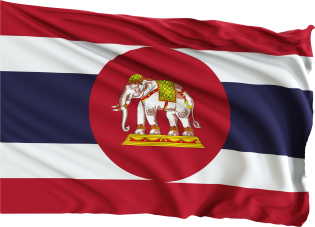Kingdom of Thailand
The Kingdom of Thailand, commonly known as Thailand is a Legacy Nation and Regional Power. The kingdom is a member of the Co-Prosperity Sphere and is a member of the League of Nations.
History
Pre-First Scinfaxi War
Evidence of continuous human habitation in what was once Thailand on Earth dated back to at least 20,000 years ago - with the earliest evidence of agriculture dating back to 2,000 BCE. Thai peoples migrated from southwestern China to mainland Southeast Asia from the 6th to 11th centuries CE.
Indianized kingdoms such as the Mon, Khmer Empire, and Malay states ruled the region, competing with Thai states such as the Kingdoms of Ngoenyang, Sukhothai, Lan Na, and Ayutthaya, which also rivalled each other. European contact began in 1511 with a Portuguese diplomatic mission to Ayutthaya, which became a regional power by the end of the 15th century. Ayutthaya reached its peak during the 18th century, until it was destroyed in the Burmese–Siamese War. King Taksin the Great quickly reunified the fragmented territory and established the short-lived Thonburi Kingdom (1767–1782), of which he was the only king. He was succeeded in 1782 by Phutthayotfa Chulalok (Rama I), the first monarch of the Chakri dynasty. Throughout the era of Western imperialism in Asia, Siam remained the only state in the region to avoid colonization by foreign powers, although it was often forced to make territorial, trade, and legal concessions in unequal treaties - particularly to the French Republic. The Siamese system of government was centralized and transformed into a modern unitary absolute monarchy during the 1868–1910 reign of Chulalongkorn (Rama V). In the Great War, Siam allied with the United Kingdom - siding with the Allies, a political decision made in order to amend the unequal treaties. Following a bloodless revolution in 1932, the nation became a constitutional monarchy and changed its official name to Thailand.
